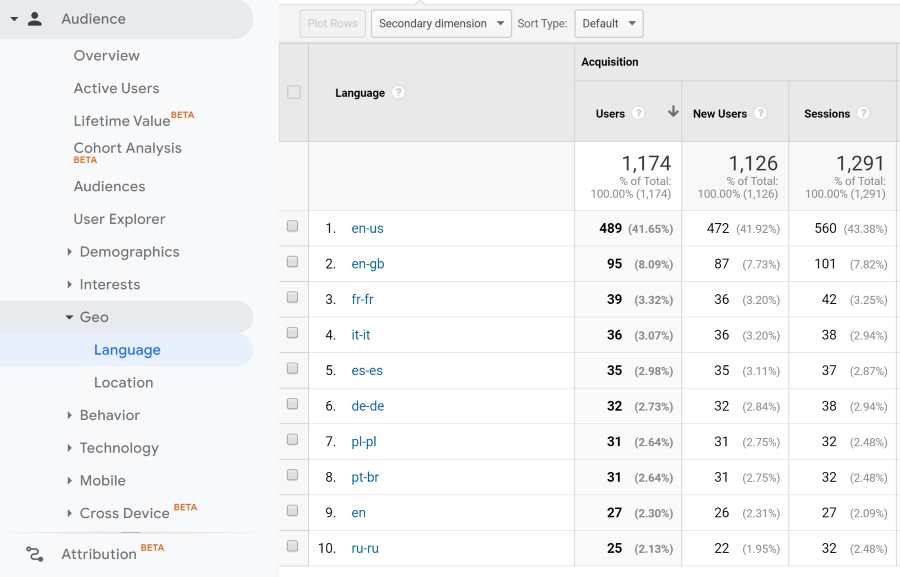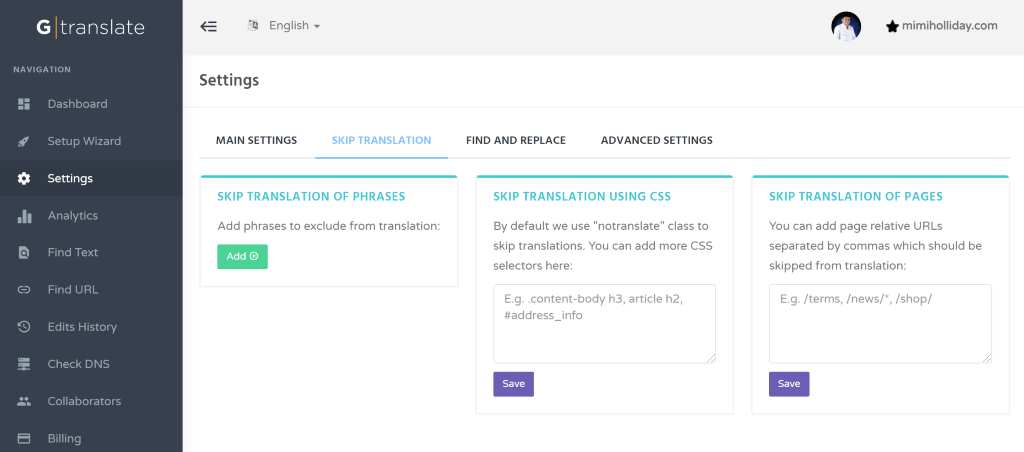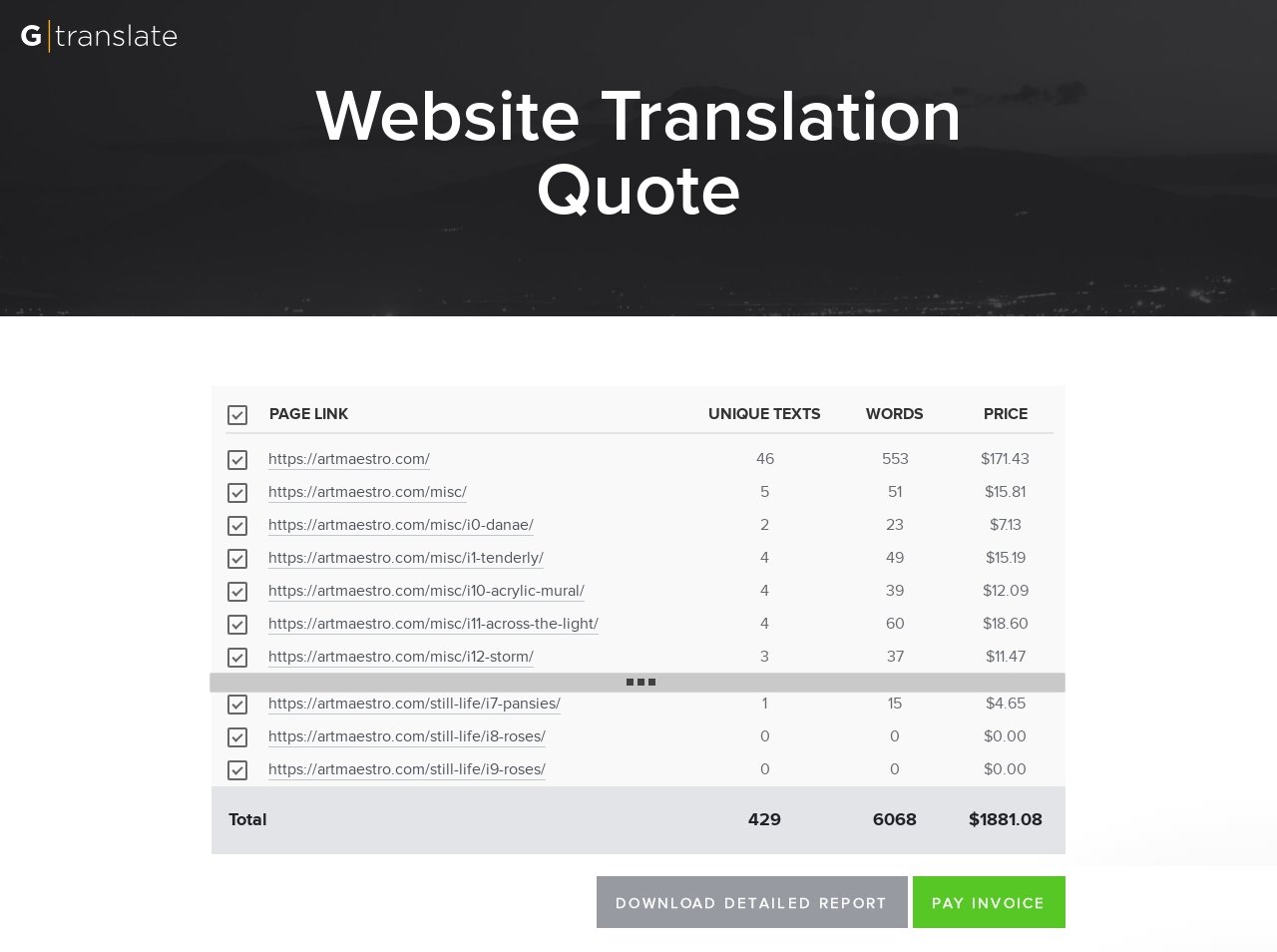The painful truth has already been acknowledged.
Monolingual websites don’t allow you to speak to your foreign buyers in their native language.
They don’t allow you to compete for search engine ranking in multiple languages.
You are fed up with the limitations of your monolingual website and want to make it multilingual.
But where to start? How to identify your top markets and consequently languages you should target.
Where to find a dependable translation agency or freelancer. And finally, how to have at least an approximate understanding of your website translation budget.
When similar questions popped up in your mind, you perhaps first searched for answers on Google.
Yes, many blogs write on website translation services costs but they are mainly agencies who just describe their services.
Our post will give you a comprehensive understanding not only about costs but also the whole website translation process. In the end, you will know
- how to do budget planning,
- what translation service to choose,
- what tips to follow to save money but have all your top pages in front of your target audience.
Website translation process in 9 steps: Get rid of monolingual site limitations
This section is dedicated to overcoming monolingual website limitations and opening new opportunities for your online business.
Here’s where to start from:
#1 Check your Google Analytics
The top 5 languages used on the internet include English, Chinese, Spanish, Arabic, and Portuguese. But you don’t have to translate your site into all of them if local speakers don’t belong to your target groups.
Instead, you should use an analytics tool to figure out which markets are you attractive for. That tool can be Google Analytics, simple and free and do half of the job for you.
When you go to your account’s Audience → Geo → Location report, you see which country users visit your site most.
GA will show data about your user behavior and conversion metrics so you understand whether you receive quality visitors or not.
Another way is to go to your account’s Audience → Geo → Language report and see which languages are prevailing.

That’s the very first thing you should do. What’s next?
#2 Set goals for reaching X, Y, Z markets
If you don’t have visitors from X country today, doesn’t mean you can’t have them tomorrow. Maybe you researched X country’s market and found that your products/services are a perfect fit for them. Why don’t take steps to reach that market?
You can translate your website into that country’s main language(s) and then start working on marketing them your brand.
To be sure about targeting a specific market, you need advanced knowledge and reliable statistics about that market’s buying behavior. A country/market researcher will be your best assistant to put that essential data in front of you.
#3 Understand which languages are your top priority
Now it’s time to figure out which languages you actually plan to target. People living in multiple countries might be speaking the same language. Oppositely, people living in the same country might be speaking completely different languages.
For example, Portuguese is spoken both in Brazil (Latin America) and Portugal (Europe). And the difference in the written language isn’t big. Or Russian is an official language both in Russia and Belarus.
But if we take Switzerland, you can’t be sure whether your visitor is a German, French, Italian or Romansh native speaker. That’s why researching that country’s demographics and the cultural picture is of paramount importance.
#4 Identify top keywords your pages are targeting
Translated pages have a mission to get indexed in search engines and bring quality traffic. And without keywords in mind, it will be hard to optimize your pages for Google bots who crawls millions of pages every day.
You should identify which keywords suppose high intent, aka have the potential to result in sales. Those keywords are called transactional keywords and contain words like “buy”, “buy online”, “price”, “best price”, etc.
The goal of keyword research is to understand how users look for similar terms in their own language. Because the essence of keywords usually will be the same but the formulation/order of words might differ from language to language.
#5 Subscribe to a website translation plugin/app (e.g. GTranslate)
Having a multilingual site takes nothing more but to start using a multilingual website plugin/app.
A similar tool like GTranslate will automatically translate your pages and give you the option to edit them easily. Whether you want to update your meta descriptions, URLs or meta tags, you won’t face difficulties in dealing with our user dashboard.
The translation of SEO elements will help you include strategic keywords in your translated web pages and become even more competitive in search engines.
Our free plan allows you to translate all your pages into your target languages automatically. To be able to make edits, you simply need to invest in one of our paid plans.
We are proud to say that GTranslate has reached 100,000+ active installations so far on WordPress platform only. And we want you to become our next active and engaged user.
If you run an eCommerce store you should find us at the Shopify app store.
If your website runs on WordPress, you can get GTranslate here.
And if your website runs on another platform (like SquareSpace), you should check out GTranslate’s features and available plans here.
GTranslate will translate your website pages using Google’s neural machine translation system. We are honest with you - automatic translations aren’t 100% perfect. But they got even closer to understanding contexts and working as a human translator.
However, you may want to ensure a top-notch translation quality and automatic translations might not suffice you. Let’s discuss this under Point 6.
#6 Get acquainted with industry prices
Services mostly charge per word. The average price per word ranges between $0.06 and $0.12. As for hourly rates, the rate starts at approximately $20 per hour.
The price depends on various factors, including translation volume, language pairs, and of course your niche.
Niches that require professional background and extra qualifications (medical, legal, scientific) will cost higher. Industries like education, charity, general healthcare or similar areas might cost lower. Because one doesn’t need to be an expert to understand these topics.
Depending on your budget, you can understand how many languages to translate your site into. Maybe your budget allows you to have your site only in 2-3 languages.
Another approach is to target more languages but translate only your most valuable pages. Learn how to do that under Point 7.
#7 Exclude parts that don’t need to be translated
Your site might have hundreds or even thousands of pages. You possibly aren’t planning to translate them all. For example, you might not want to translate all your blog posts, case studies, etc (though having a few educational/informational pages won’t hurt).

Keep only those pages that are of high-intent and will lead to your website monetization. You can choose pages based on their revenue potential, the relevance of content on them, impact on brand perception, etc.
One can find pages with high potential from GTranslate User Dashboard too.
#8 Hire a translation agency or a freelance translator
Discussions around the modern world dilemmas never end. Hire a translation agency vs translator, hire a marketing agency vs marketer, do online vs offline shopping, work from office vs from home…
Hopefully, we are going to discuss only translation agency vs freelance translator challenge.
Thus, you will get an understanding of all the main pros and cons of this dilemma and see which option you are ready to pay for.
Translation agency pros
1) Global teams with specializations
Agencies usually have big teams and native translators in narrow niches. If you operate in highly specialized industries (legal, medical, financial, technical) agency project managers will allocate your task to a competent translator.
2) Editing/proofreading included
Agencies have a team of editors/proofreaders who review the translations. Revisors ensure there are no typos or grammatical errors in the text and you can publish it on your website.
3) SEO translation available
Most translation agencies offer SEO translation. So your translation will contain your target keywords in your target language and rank easier in search engines.
Translation agency cons
1) Additional costs
Since multiple employees are involved in the process (project manager, translator, editors), it automatically increases overall website translation cost.
2) You don’t know who is translating
As a client, you won’t know who will work on your project and whether he/she is a truly professional translator. You simply trust the agency to do a quality job for you.
As for reviewers, you again don’t know anything about them. The only person you communicate with is the project manager.
So you should trust the agency for 100% to allocate your tasks to the most relevant candidates.
3) Multiple translators on the same project
Translation agencies might divide your website content among multiple candidates and again different editors might review those different texts.
The result would be content with no consistency where the same terms are translated differently.
Freelance translator pros
1) Relatively lower costs
Freelancers will translate your website at a relatively lower cost because they don’t pay salaries and work for themselves.
2) Direct contact with them
You know who is doing the job for you. You can read their LinkedIn recommendations or reviews on their personal site.
You can ask to show their licenses and certifications if you require a translation for a narrow niche. So you are the one to decide whether he/she is a trustworthy candidate.
3) Ask for a test translation
Not all but the majority of translators will agree to complete a free test translation. Unless your profile is suspicious, they will hardly think you are a scammer and will be OK with proving their skills.
Be informed that you can ask for a free translation of a maximum of 200-250 words. More is not accepted and might push translators away.
Freelance translator cons
1) No proofreading
Translators might be editors too but fully relying on their self-checking abilities is not so professional. A 3rd party’s fresh eye will be required to ensure everything is right and sounds natural.
2) Might not be an SEO specialist
Freelance translators might not be familiar with SEO best practices and even principles.
3) You are the project manager
You have to spend your own time and make sure that the freelancer completes the task on time.
#9 You can use GTranslate’s proofreading or professional translation service
At GTranslate we have our tried and tested team of native proofreaders & translators. They do the translation right on your website using in-context translation editor. No Excel or Word files. Not even HTML files.
Want some more benefits of working with us?
1. You have a choice
It’s up to you to decide whether to hire a native proofreader or a professional translator. The difference is that a proofreader’s service is much more affordable.
He/she will check the automatic translation on your website and make improvements when needed.
Imagine, you already have the automatic translation of your website at least at the mid-quality. You pay a native speaker to work on the existing text and make corrections only when necessary.
As for hiring a translator, he/she will translate your website from scratch. And the website translation price will naturally be higher.
2. One language, one translator
We don’t allocate your website translation process to multiple translators or proofreaders. We do it to make sure that the translation’s tone of voice is consistent.
3. Design issues? We will fix
You know that sometimes the translated text may get larger than the source text. Languages are different and translated sentences may not fit into your website design. What to do?
In similar situations, all you need to do is to contact our technical support team and have your issues solved for free.
4. Order as many page translations as you need
You may request a quote for translating 20 or 25 of your pages. If you see that the final cost exceeds your budget, you can just remove all those pages that don’t seem too important.

It allows you to save money but at the same time put the best content in front of users. GTranslate’s website translation cost calculator will allow you to get an estimation in a few minutes.
5. Be visible in search engines
GTranslate’s In-context editor allows you to edit your translated content and add your target keywords. Not only will your pages get indexed, but they will contain keywords with search volume and appear in front of the right audience.
Seems like we covered all the ins and outs of the website translation process. If you have further questions don’t hesitate to contact us or simply start your 15-day free trial with GTranslate today!
